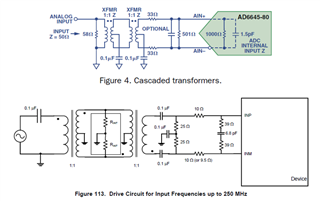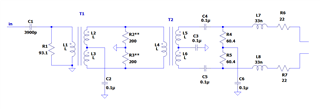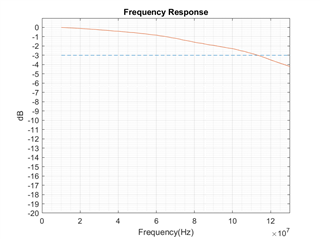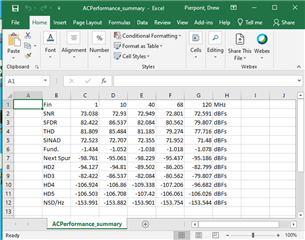Hello,
Just a question about the latest version of the ADS42LB69 datasheet. On page 62, figure 113, this is a circuit listed as "Drive Circuit for Input Frequencies up to 250 MHz". I searched around the forum and could not fine it but has anyone from TI ever posted measured data of the input circuit? I want to know what the input VSWR would likely be for such a wideband input with listed components. Based on the EVM BOM, the xfmrs look to be Coilcraft WBC1-1TL. In any case I would like to see what to expect with the circuit as listed.
thanks
dennis brown







